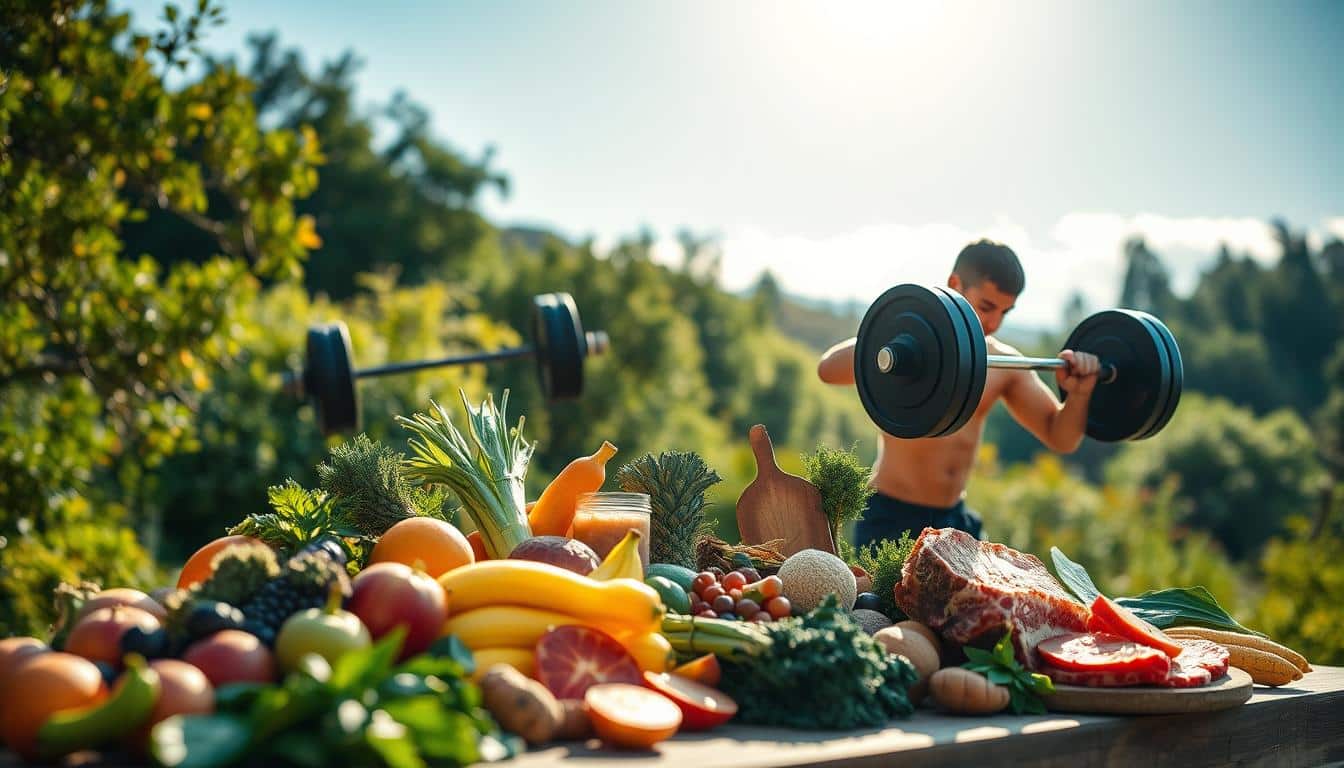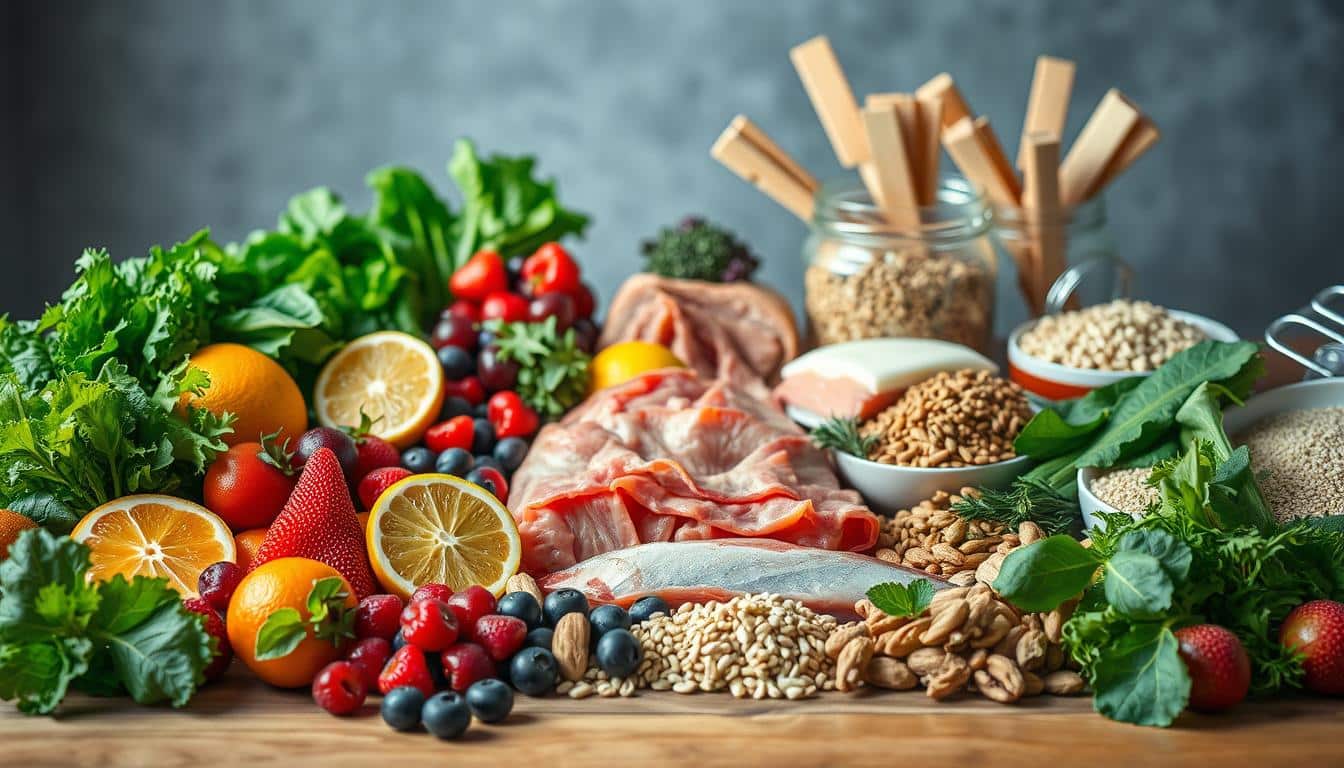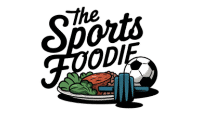Did you know that 70% of the typical U.S. diet includes foods our Stone Age ancestors never ate? Think grains, dairy, and processed sugars. These modern additions might be holding you back from peak performance.
Eating like our ancestors can help athletes fuel their workouts naturally. By focusing on whole, unprocessed foods, you can boost energy, improve recovery, and enhance overall performance. This approach aligns with how our bodies evolved to function best.
Training and sport demand specific nutritional strategies. While the traditional approach is simple, athletes often need slight adjustments to meet their unique needs. This article will guide you on meal timing, nutrient choices, and practical tips to optimize your routine.
Ready to take your performance to the next level? Let’s dive into how you can eat smarter and train harder.
Understanding the Paleo Approach for Active Lifestyles
The way our ancestors ate might hold the key to better performance. This approach focuses on whole, unprocessed foods that align with how our bodies evolved. By understanding its origins and principles, you can see why it’s a game-changer for active lifestyles.

Origins and Basic Principles
Our Paleolithic ancestors relied on natural, unprocessed foods like lean meats, fish, fruits, and vegetables. They avoided grains, dairy, and legumes, which are staples in modern diets. This way of eating supported their active, hunter-gatherer lifestyle.
Today, this approach emphasizes nutrient-dense foods that fuel energy and recovery. By cutting out processed items, you can reduce inflammation and improve overall health. It’s a return to simplicity that works wonders for your body.
Benefits Over Modern Diets
Modern diets often include refined sugars and processed grains, which can spike blood sugar and lead to energy crashes. In contrast, the Paleo approach focuses on whole foods that provide steady energy and better digestion.
Eating more fruits and vegetables boosts your intake of vitamins and antioxidants. This can enhance recovery and support your immune system. Plus, eliminating processed foods helps reduce cravings and keeps you fuller longer.
Compared to Western diets, this approach prioritizes quality over quantity. It’s not just about what you eat but how it fuels your body. For active individuals, this can mean better performance and faster recovery.
Key Nutritional Components for Workout Performance
Fueling your body with the right nutrients can make or break your workout performance. Whether you’re lifting weights or running miles, the quality of what you eat matters. Let’s break down the essentials for energy, recovery, and muscle growth.

High-Quality Protein and BCAA Intake
Protein is the building block of muscle. Lean meats like chicken, turkey, and beef are packed with high-quality protein. Seafood, such as salmon and tuna, also provides essential amino acids, including BCAAs. These help repair and grow muscle after intense workouts.
Animal-based proteins are more nutrient-dense compared to plant-based options. They contain all the essential amino acids your body needs. Adding eggs or Greek yogurt to your meals can also boost your protein intake.
Carbohydrate Timing and Recovery
Carbohydrates are your body’s primary energy source. Timing is key—eating carbs before a workout fuels your session. Post-workout carbs help replenish glycogen stores and speed up recovery.
Opt for whole-food sources like sweet potatoes, fruits, and vegetables. These provide steady energy without the crash. Pairing carbs with protein after exercise can enhance muscle repair.
Healthy Fats and Essential Nutrients
Healthy fats are crucial for sustained energy and overall health. Avocados, nuts, and olive oil are excellent sources. They also help your body absorb fat-soluble vitamins like A, D, and E.
Vitamins and minerals from fruits and vegetables support your immune system and recovery. Spinach, berries, and carrots are rich in antioxidants. These nutrients reduce inflammation and keep you performing at your best.
Balancing protein, carbs, and fats ensures your body gets what it needs. This combination supports muscle mass, energy levels, and overall performance. Start with whole, unprocessed foods to fuel your workouts effectively.
paleo diet for athletes: Strategies for Pre, During, and Post-Workout
What you eat before, during, and after exercise matters more than you think. Timing your meals and choosing the right foods can maximize your energy, performance, and recovery. Let’s break it down step by step.
Pre-Workout Meal Options
Your pre-workout meal sets the stage for success. Focus on low-fiber carbohydrates for quick energy. A banana with almond butter or a small sweet potato are great choices. Eat 1-2 hours before your session to allow digestion.
Timing is key. Eating too close to your workout can cause discomfort. Too early, and you might run out of fuel. Plan your intake to match your exercise intensity and duration.
Nutrition During Intense Exercise
For longer or high-intensity sessions, you’ll need extra fuel. Sports drinks are a convenient source of carbohydrates and electrolytes. They help maintain energy levels and prevent dehydration.
If you’re exercising for over an hour, aim for 30-60 grams of carbs per hour. This keeps your energy steady and supports performance. Water alone won’t cut it for extended efforts.
Post-Workout Recovery Foods
Recovery starts within 30 minutes of finishing your workout. This is the best time to replenish glycogen and repair muscles. A smoothie with protein powder, berries, and spinach is a quick and effective option.
Pair carbs with protein to optimize recovery. Grilled chicken with quinoa or a turkey wrap with veggies are excellent choices. Don’t forget to hydrate with water or an electrolyte drink.
| Exercise Duration | Calorie Intake | Food Source |
|---|---|---|
| 30-60 minutes | 100-200 calories | Banana, yogurt, or energy bar |
| 1-2 hours | 200-400 calories | Sweet potato, chicken wrap, or smoothie |
| 2+ hours | 400-600 calories | Quinoa bowl, salmon, or recovery drink |
By planning your meals around your workouts, you can fuel your body effectively. Focus on timing, quality, and balance to see the best results.
Adapting the Paleo Diet to Fit Training Demands
Nutrition isn’t one-size-fits-all—your workouts deserve a personalized approach. Whether you’re training for a marathon or hitting the gym, your body’s needs change with intensity and season. Let’s explore how to tweak your eating habits to match your exercise goals.
Adjusting Macronutrient Ratios
Your macronutrient needs shift with training phases. During high-intensity periods, your body craves more carbs for energy. In recovery phases, protein becomes essential for muscle repair. Healthy fats support overall energy and recovery year-round.
Research shows that athletes may need to adjust their ratios based on exercise demands. For example, endurance training often requires a higher carb intake, while strength training benefits from increased protein. Tailoring your meals ensures your body gets the fuel it needs.
Periodization and Meal Timing
Syncing your meals with your training schedule can maximize performance. Eating a balanced meal 1-2 hours before exercise provides steady energy. Post-workout, focus on replenishing glycogen and repairing muscles with a mix of carbs and protein.
For longer sessions, consider intra-workout snacks like bananas or energy bars. Timing your meals helps maintain energy levels and supports recovery. Planning ahead ensures you’re always prepared.
| Training Phase | Macronutrient Focus | Food Examples |
|---|---|---|
| Endurance | High Carbs, Moderate Protein | Sweet potatoes, quinoa, lean meats |
| Strength | High Protein, Moderate Carbs | Chicken, eggs, nuts |
| Recovery | Balanced Carbs, Protein, Fats | Salmon, avocado, spinach |
Simple swaps can make a big difference. Replace processed snacks with whole foods like nuts or fruit. These small changes support your body’s needs without sacrificing taste or convenience.
Ongoing research highlights the benefits of tailored nutritional products. Experiment with different options to find what works best for you. Your body is unique—your nutrition should be too.
Real-Life Performance Benefits and Health Outcomes
Optimizing your meals can unlock real-life health and performance benefits. Many athletes report feeling stronger, recovering faster, and maintaining higher energy levels throughout the day. Let’s explore how these improvements happen and what you can expect.
Improved Muscle and Immune Function
Eating whole, nutrient-dense foods supports muscle repair and boosts your immune system. Studies show that reducing acid load in your body helps protect bones and muscles. This is especially important for active individuals who push their limits every day.
Avoiding dairy and processed sugar can also improve nutrition outcomes. These changes reduce inflammation and help your body recover faster. Many athletes notice fewer sick days and better overall health.
Quick Recovery and Sustained Energy Levels
Balanced meals provide steady energy and speed up recovery. Research highlights that a lower acid diet supports endurance and reduces fatigue. This means you can train harder and recover quicker.
Real-world examples show athletes feeling more energized throughout the day. By focusing on whole foods, they avoid energy crashes and maintain peak performance. Consistency in nutrition is key to long-term benefits.
| Benefit | How It Helps | Food Examples |
|---|---|---|
| Muscle Repair | Supports recovery after workouts | Lean meats, eggs, nuts |
| Immune Boost | Reduces inflammation and illness | Leafy greens, berries, fish |
| Energy Levels | Provides steady fuel for the day | Sweet potatoes, avocados, fruits |
By making simple changes to your meals, you can experience these benefits firsthand. Focus on whole foods, avoid processed items, and prioritize balanced nutrition. Your body will thank you with improved performance and better health.
Conclusion
Simple changes to your meals can lead to big gains in energy and recovery. By focusing on whole, unprocessed foods, you can fuel your workouts more effectively. Avoiding processed food and incorporating options like rice and legumes provides steady energy and supports your fitness goals.
One way to enhance your nutrition is by balancing meat with plant-based options. Swap traditional bread for whole-grain alternatives and add more fruit vegetable choices to your meals. These small swaps can make a big difference in how you feel and perform.
Remember, it’s not about perfection—it’s about progress. Start with simple, healthy changes and see how they transform your day-to-day performance. Your body will thank you for the lasting benefits of embracing a balanced, whole-food approach.


